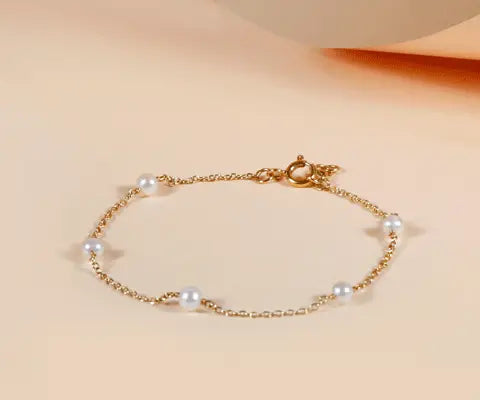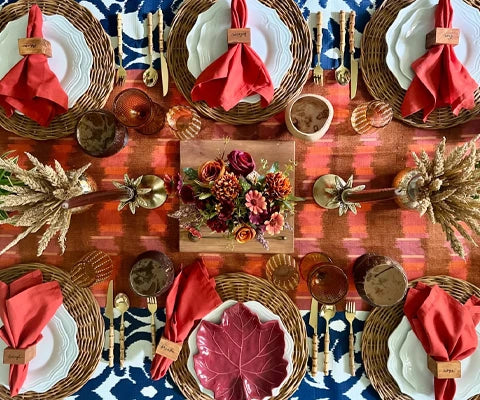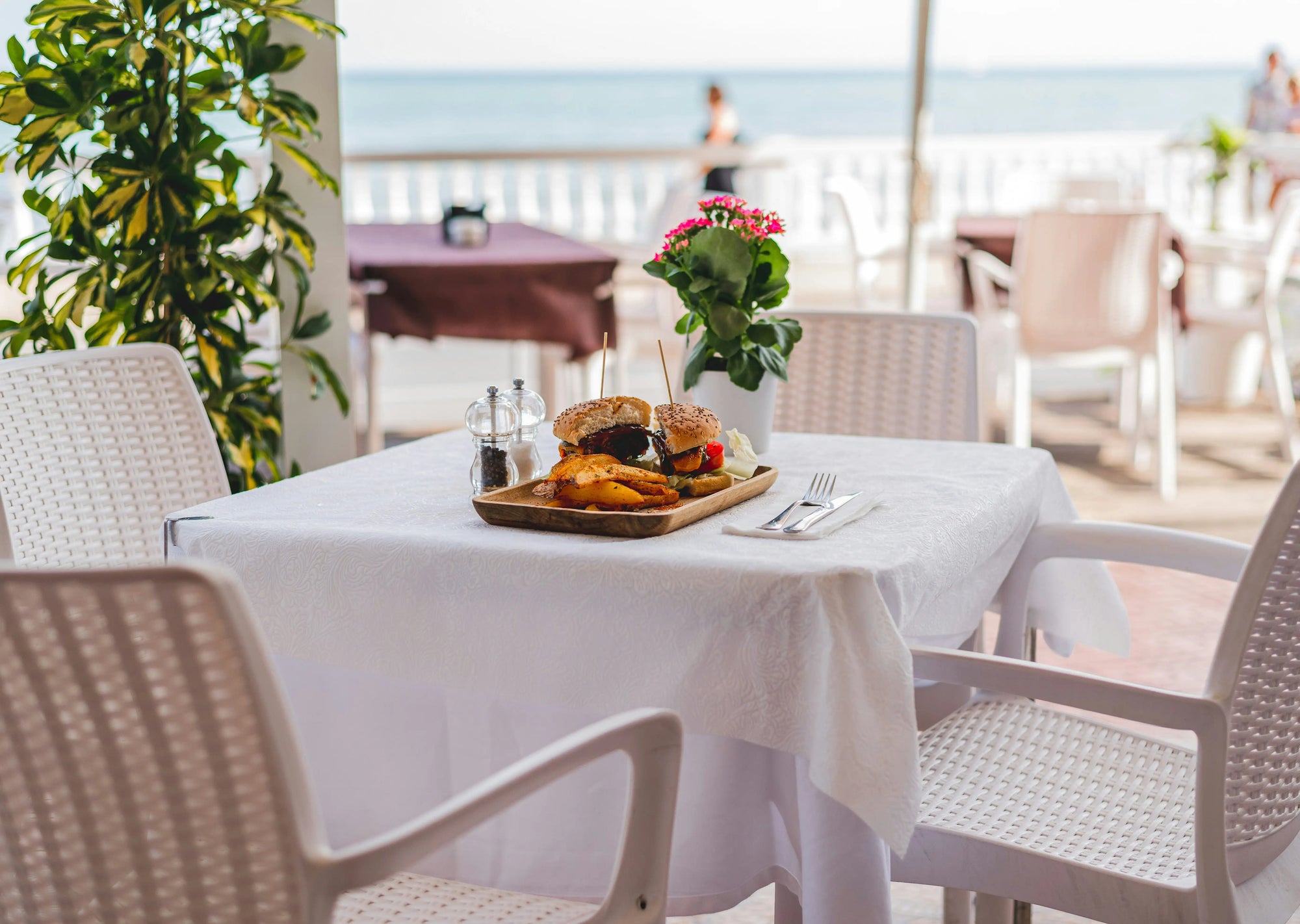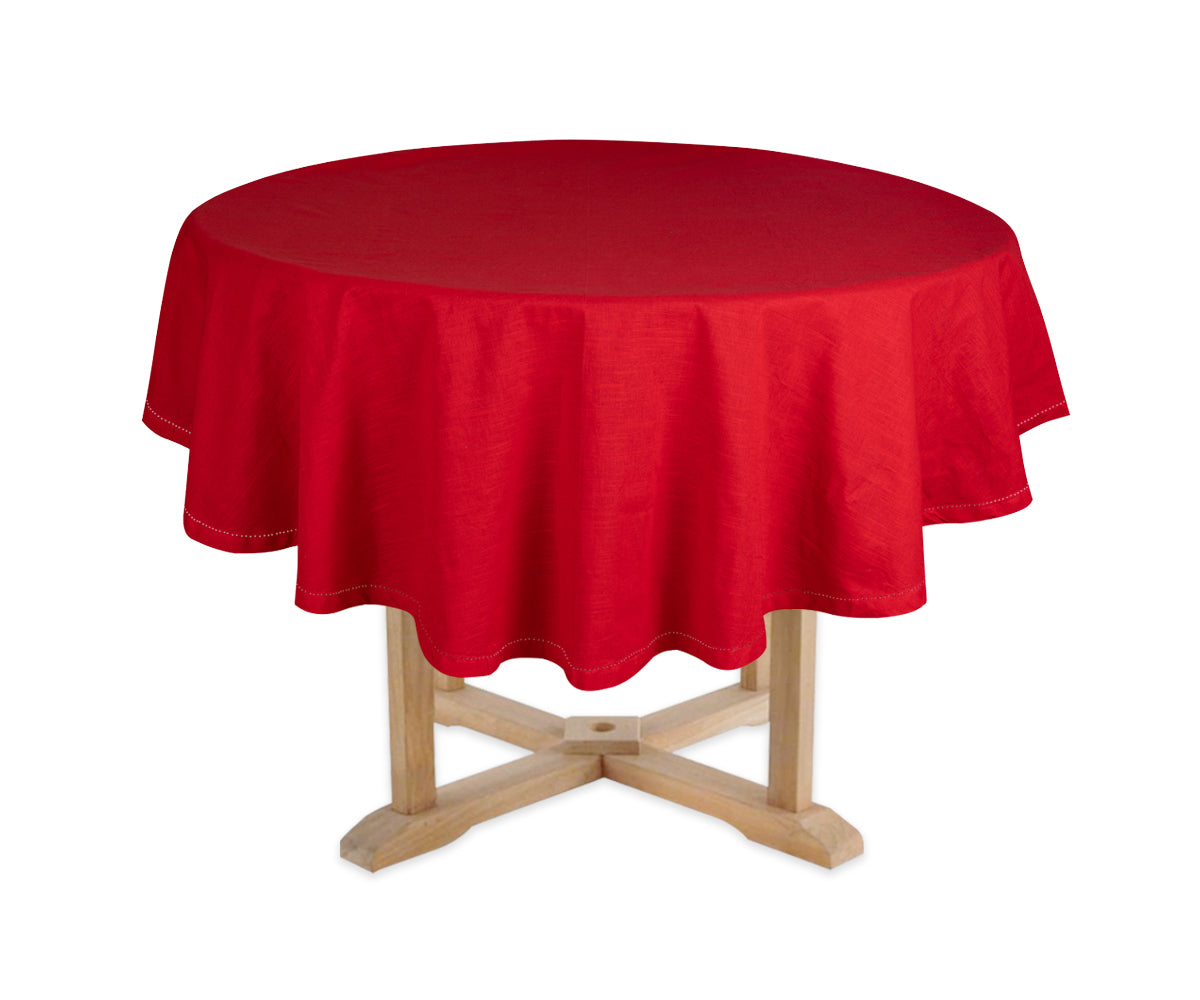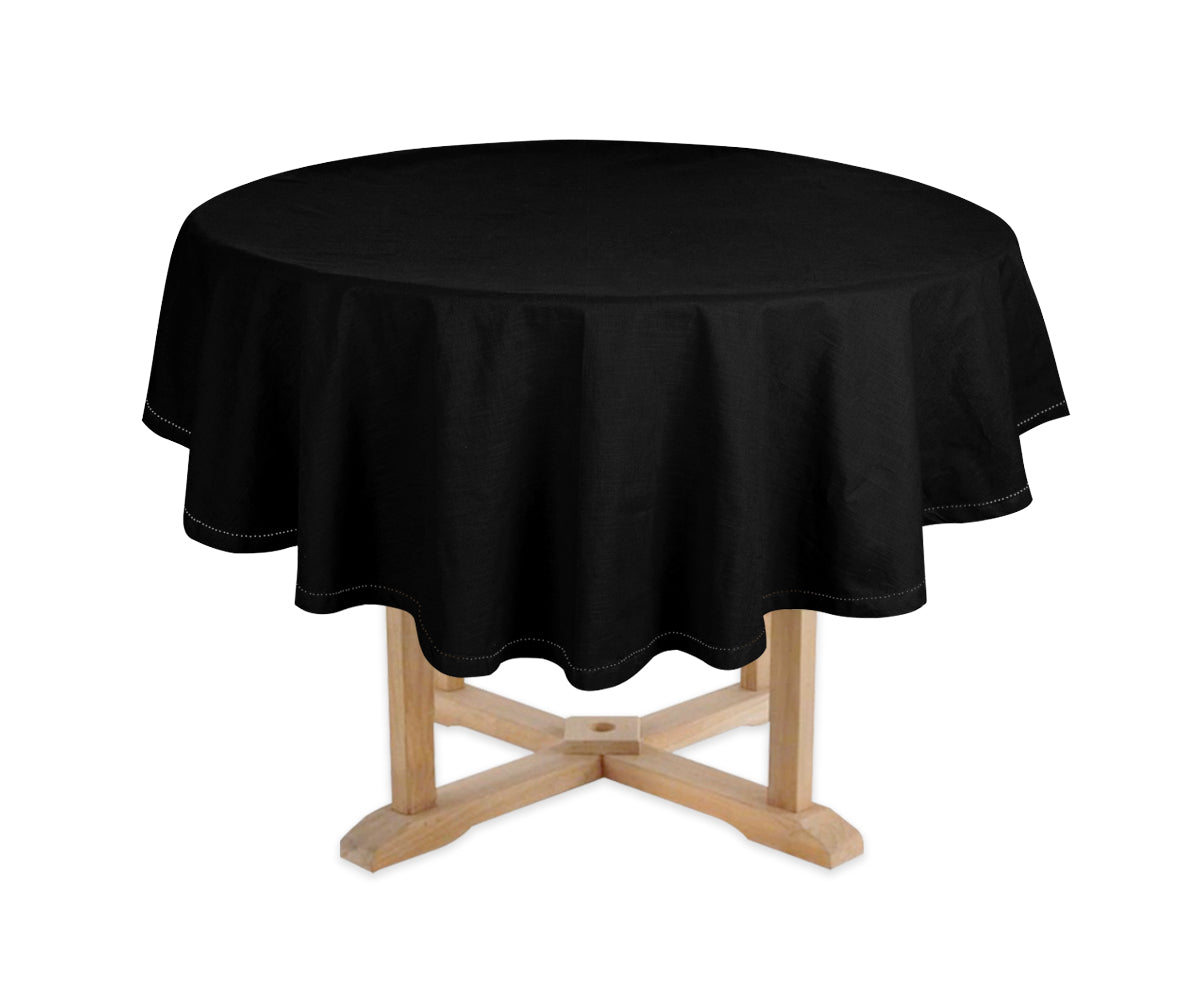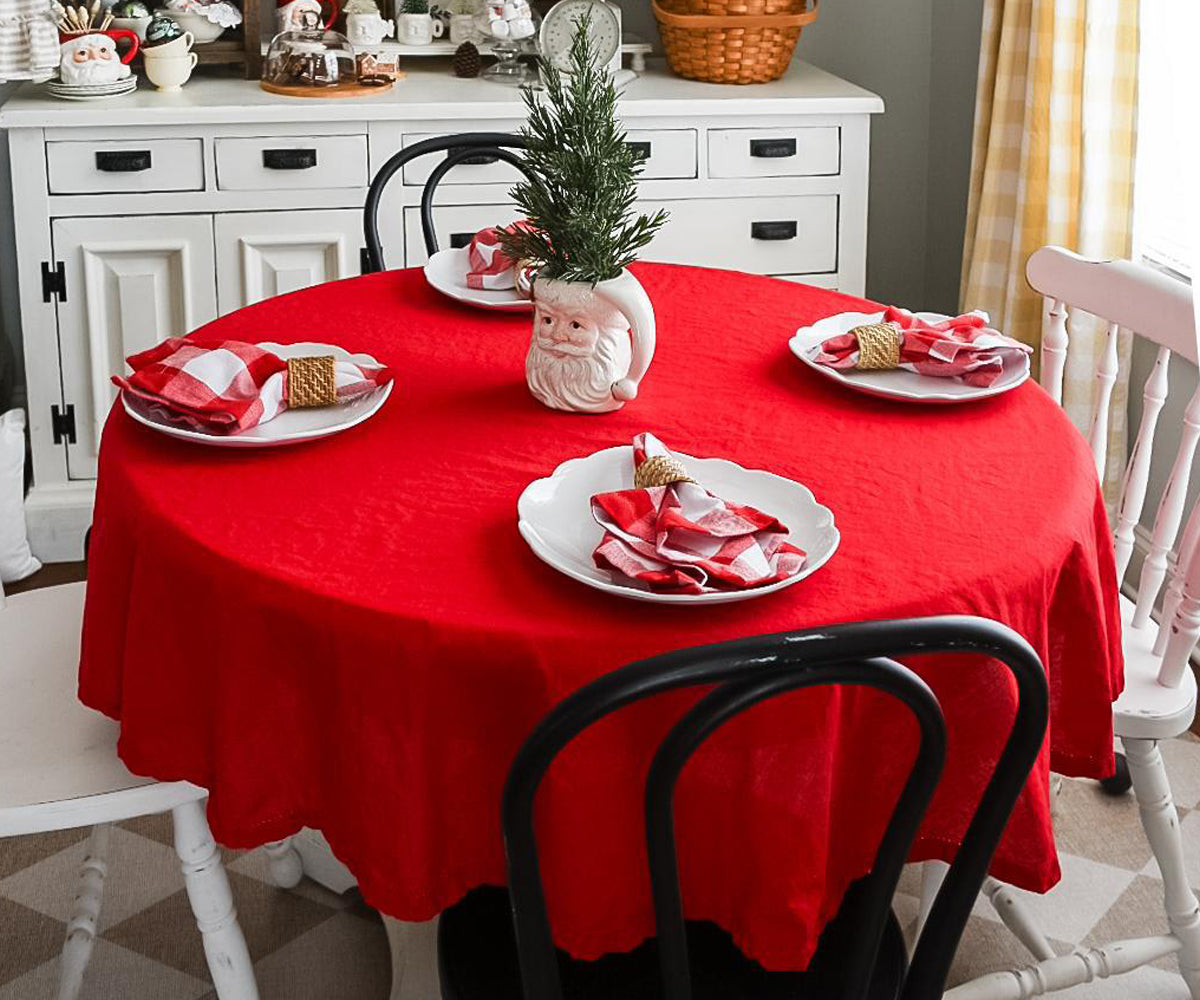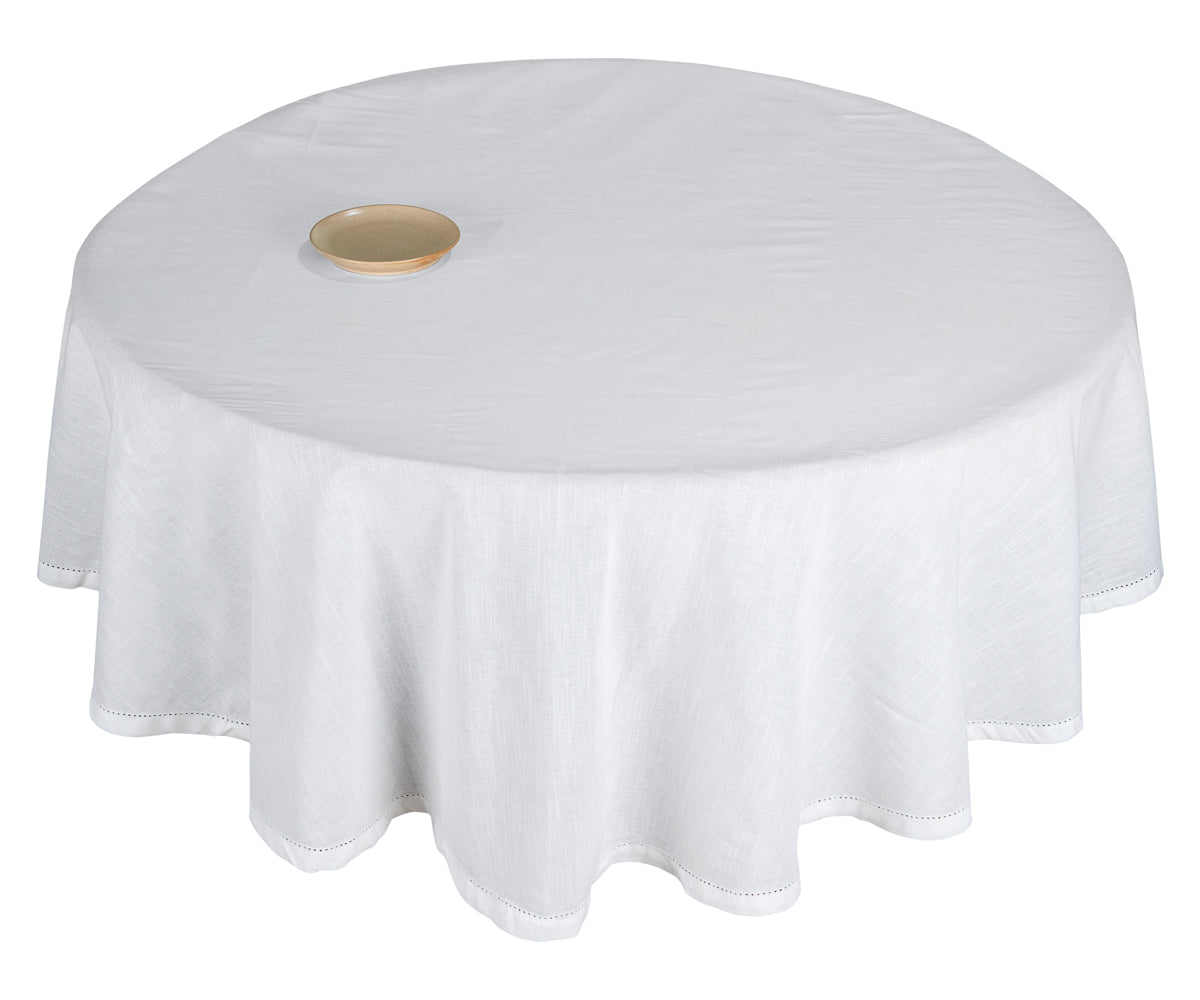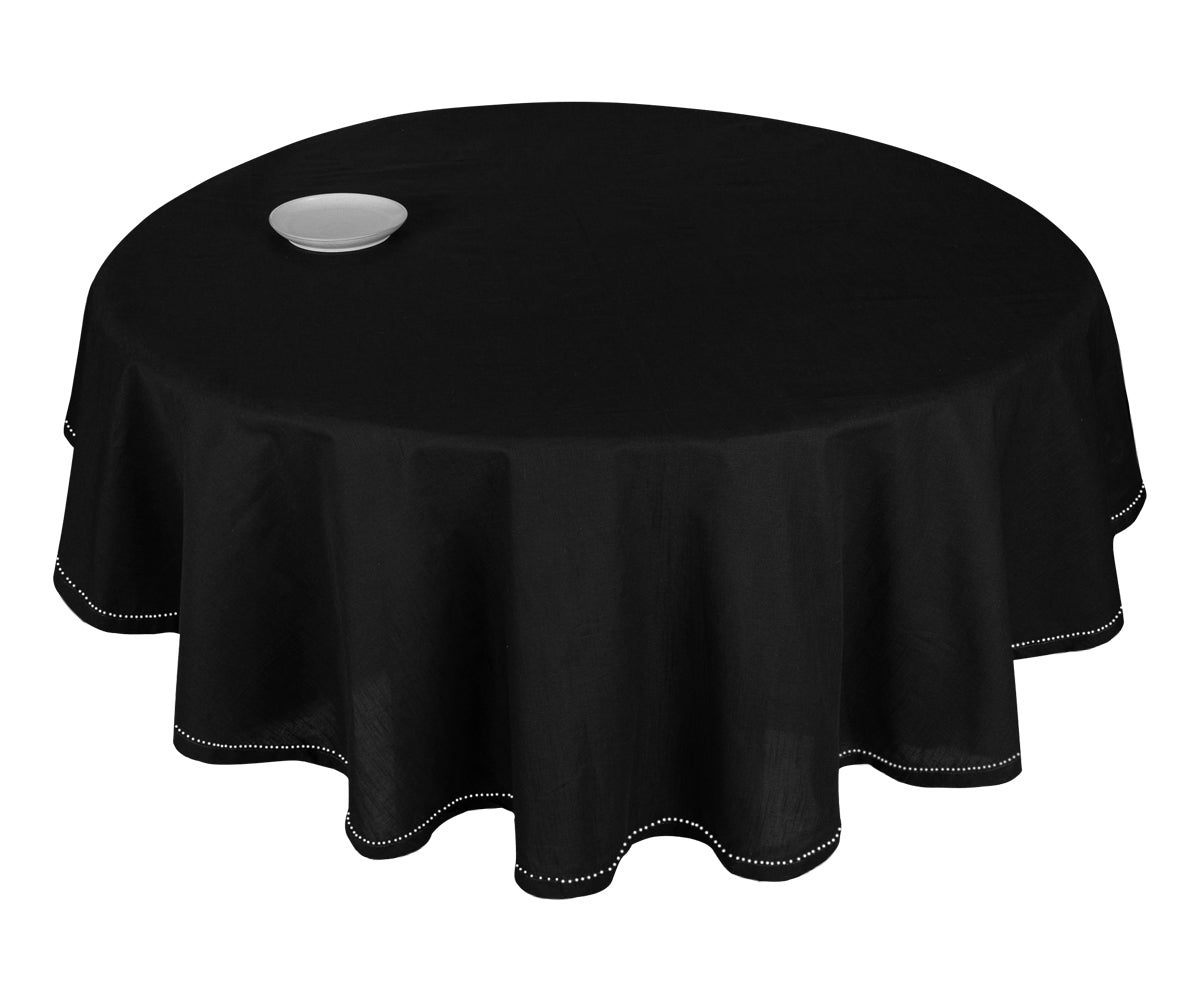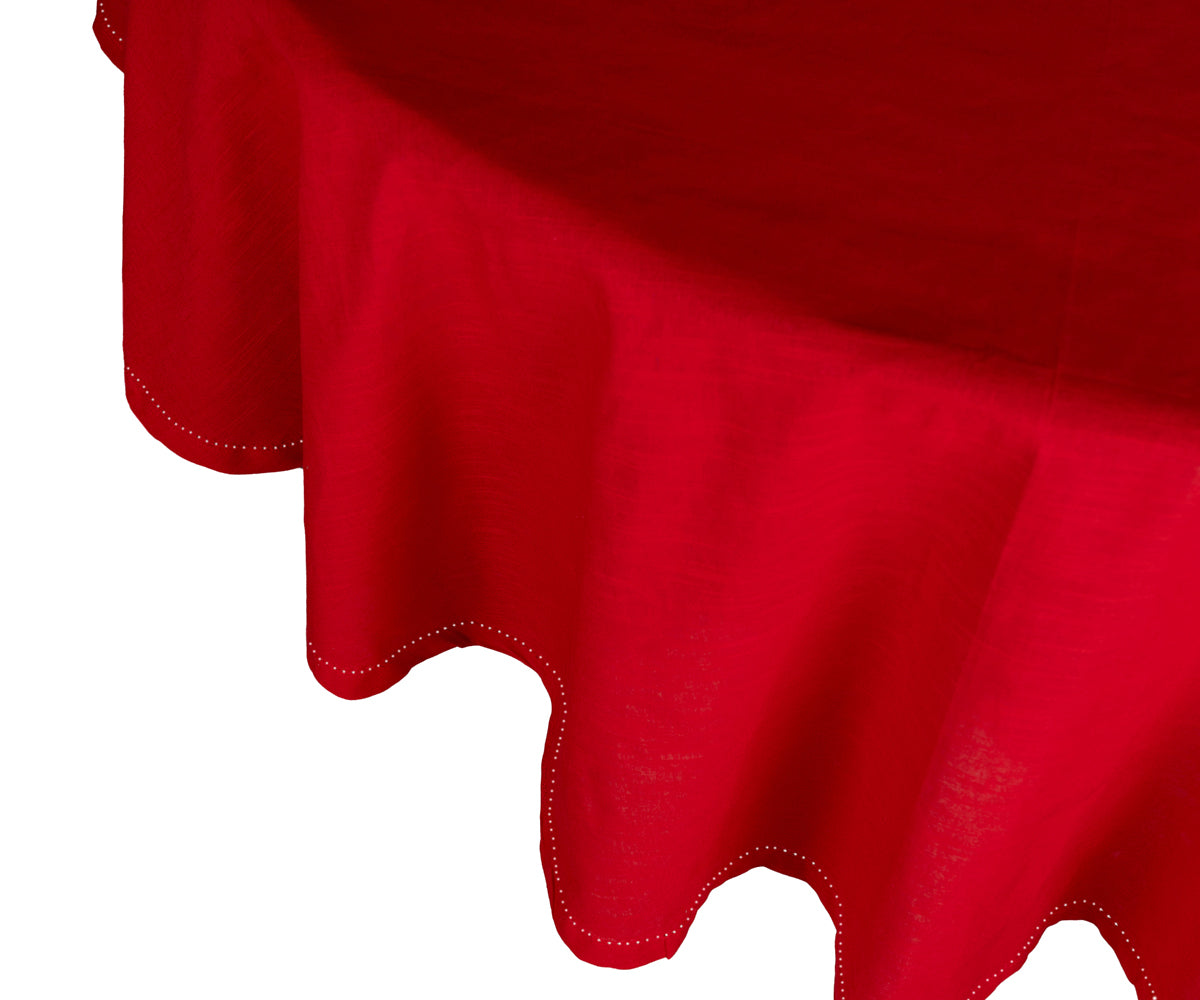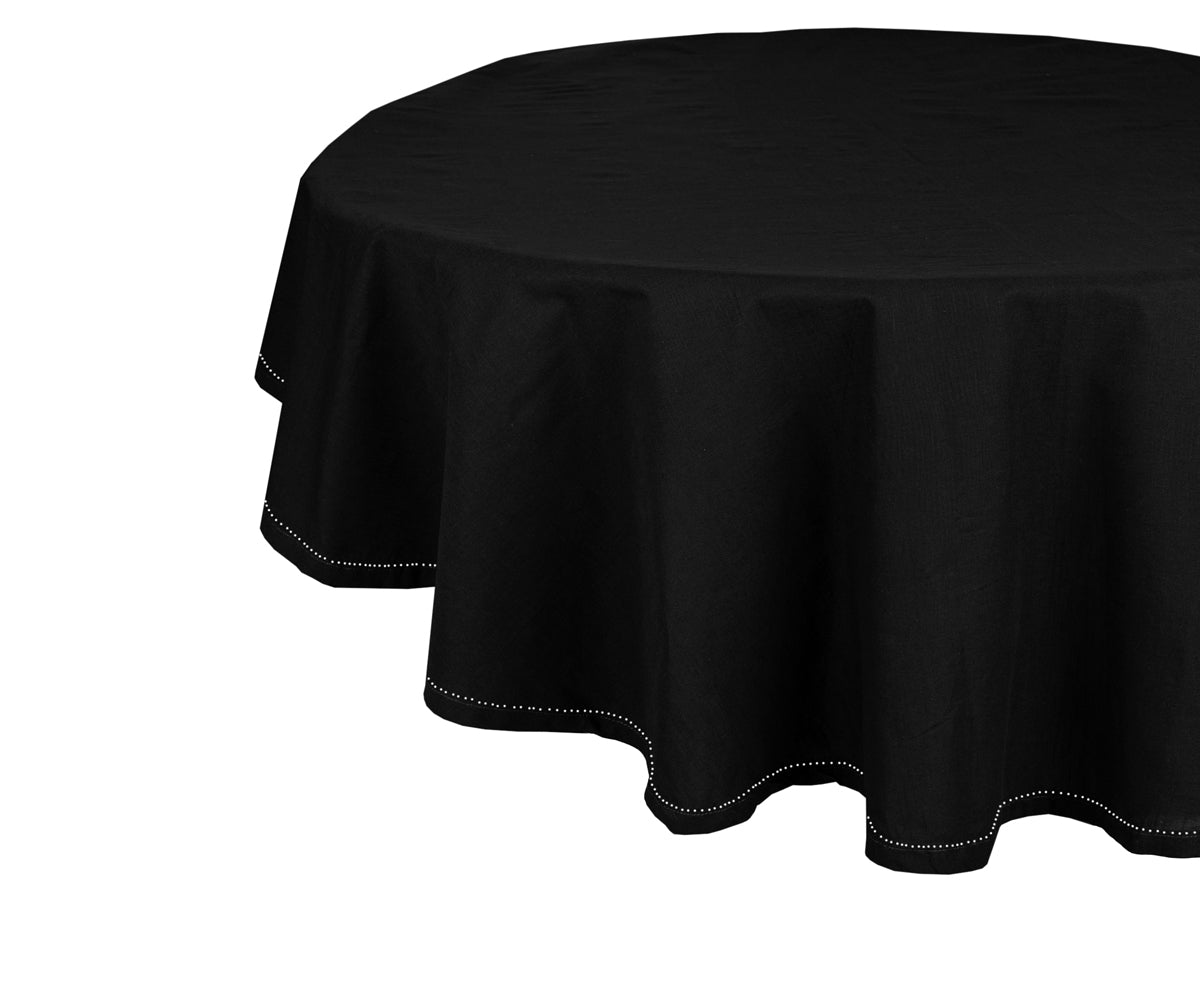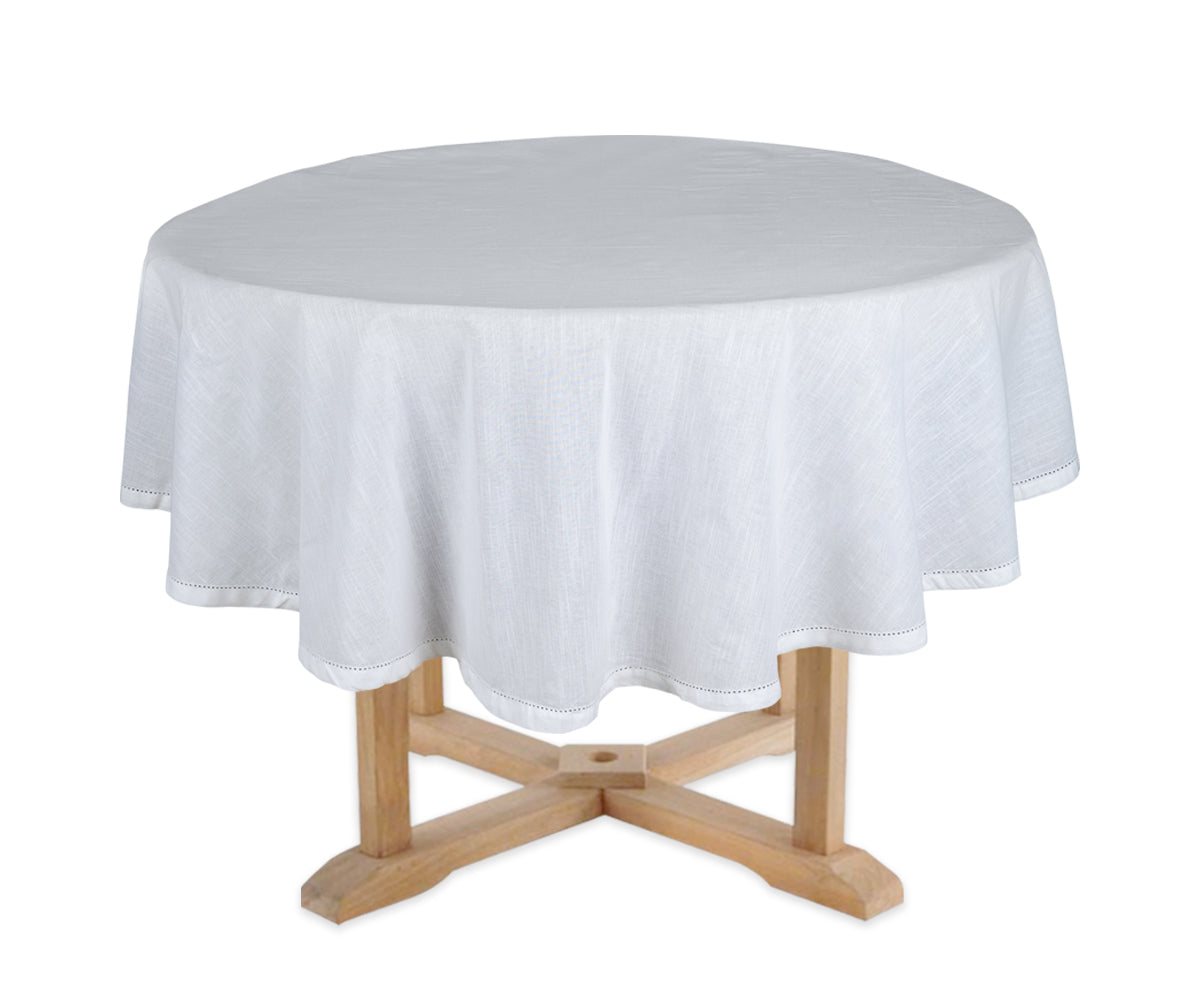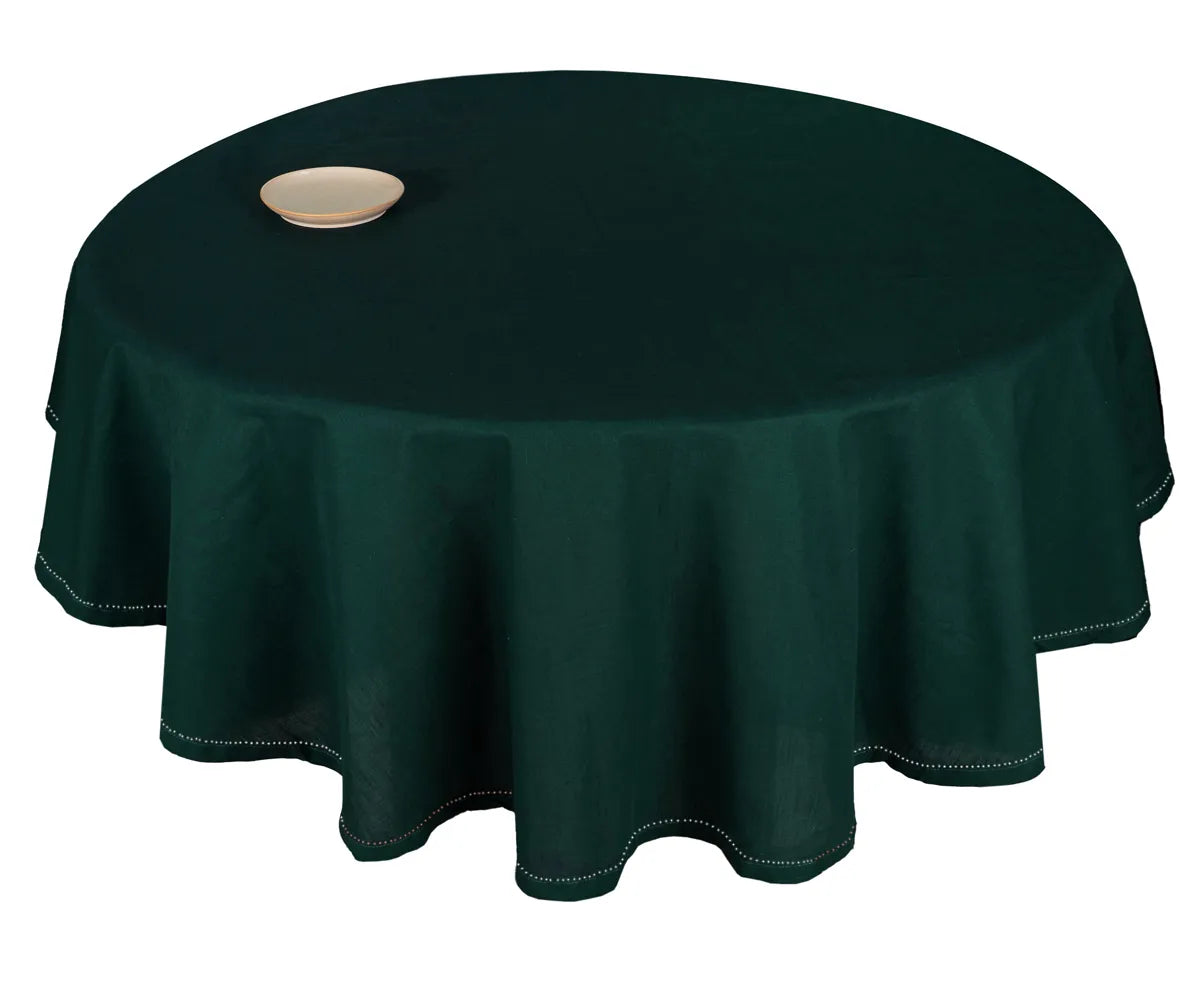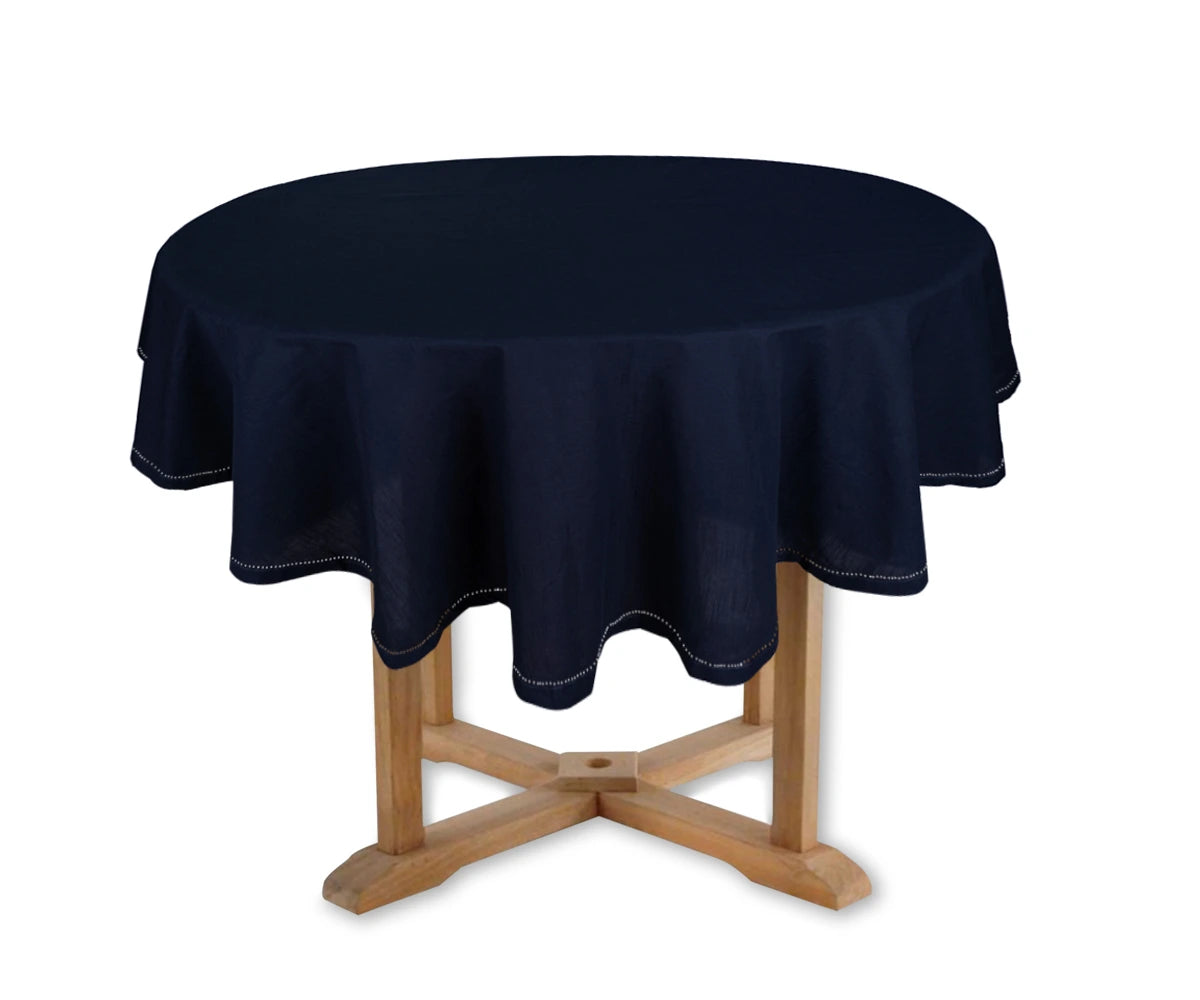Why Choose an Oilcloth Tablecloth?
Oilcloth is a cotton or vinyl-coated fabric that’s water-resistant and stain-proof. It’s smooth on top and backed with soft fabric underneath. Because of this, it’s perfect for kitchen tables, outdoor dining, or craft areas where spills happen often.
Unlike regular fabric, oilcloth doesn’t fray or soak up liquid. A quick wipe is all it takes to clean it. That’s why it’s one of the most popular materials for table coverings.
Also Read: Waterford Tablecloth Sizes: Perfect Fit for Every Table
Materials You Will Need
To make your own oilcloth tablecloth, gather the following materials:

-
Oilcloth fabric (you can find oilcloth by the yard or in pre-cut sections at fabric stores or online)
-
A ruler or measuring tape
-
Scissors or rotary cutter
-
Sewing machine (optional)
-
Fabric adhesive or iron-on tape (optional for hemming)
-
Pins or fabric clips (if you're sewing)
-
Chalk or fabric marker
-
Iron (for pressing, if needed)
Step 1: How to Measure for an Oilcloth Tablecloth
The first step in creating your custom oilcloth tablecloth is measuring your table. This will ensure you cut the fabric to the right size and avoid any mistakes.
For a Rectangular Tablecloth:
-
For a rectangular tablecloth, measure the length and width of your table.
-
Add extra fabric to allow for a drop – usually 6 to 12 inches on each side, depending on your preference.
-
The formula is: Length + (2 x Drop) and Width + (2 x Drop).
For a Round Tablecloth:
-
For a round tablecloth, measure the diameter of your table (straight across the center).
-
Add your desired drop, usually between 6 to 12 inches.
-
The formula is: Diameter + (2 x Drop).
For an Oval Tablecloth:
-
Measure the length and width of your table.
-
Add extra fabric for the drop, similar to the rectangular tablecloth measurement.
Example:
If you're making an oilcloth tablecloth rectangle for a table that is 60 inches long and 40 inches wide with a 10-inch drop, your fabric dimensions should be 80 inches long (60 + 20) and 60 inches wide (40 + 20).
Pro Tip: If you're unsure, it's always better to err on the side of caution and get a little extra fabric. It's easier to trim down than to add more!
Know About: What Is The Best Restaurant For Valentine's Day
Step 2: Choosing the Right Fabric
You can choose from various styles of oilcloth, from classic solid colors to vibrant prints. For example, a vinyl oilcloth tablecloth offers a glossy finish, while a French oilcloth tablecloth often features delicate patterns reminiscent of European country kitchens. If you love the look of Mexican oilcloth tablecloths, you'll find colorful, bold prints perfect for casual or festive occasions.
Some other popular options include:
-
White oilcloth tablecloth – Great for modern, clean aesthetics or minimalistic settings.
-
Custom oilcloth tablecloth – If you're looking for a unique design, you can create a custom print or select a fabric that suits your personal taste.
-
Provence oilcloth tablecloth – Known for rustic designs and soft colors, perfect for a cozy, farmhouse-style table setting.
When selecting oilcloth fabric, make sure to check if the oilcloth is coated with a durable, waterproof finish for easy cleaning.
Step 3: Cutting Your Oilcloth Fabric
Once you’ve decided on your fabric and have the measurements ready, it’s time to cut the fabric to size.
-
Lay your oilcloth fabric flat on a large surface like a clean table or the floor.
-
Use your chalk or fabric marker to mark the cutting lines based on your measurements.
-
Use sharp scissors or a rotary cutter to carefully cut along the lines. Make sure the edges are as straight as possible for a professional-looking result.
Pro Tip: Use fabric clips instead of pins to hold the oilcloth in place, as pins can leave holes in the fabric.
Step 4: Hemming Your Oilcloth Tablecloth
Oilcloth fabric does not fray like other fabrics, so you don’t necessarily need to hem the edges. However, if you prefer a neat finish or want extra durability, here are two methods you can use:
Method 1: Sewing the Hem
-
Fold the edges of the fabric under about 1/4 inch and press with an iron.
-
Use a sewing machine to stitch along the folded edges, securing the hem in place.
Method 2: Iron-On Hem Tape
-
Fold the edges of the fabric and press them under.
-
Apply iron-on hem tape along the edge, then press with an iron to bond it in place. This method works well if you don’t want to use a sewing machine.
Pro Tip: If you’re unsure about hemming, you can leave the edges unhemmed for a more rustic, no-sew look, especially if you're going for a more casual design like a round oilcloth tablecloth.
Read More: How to Keep Round Tablecloths from Blowing Away Without a Home
Step 5: Adding the Finishing Touches
Once your oilcloth tablecloth is cut and hemmed, it's ready to be used. However, you can personalize it further by:
-
Adding matching placemats or napkins.
-
Using decorative trims around the edges for a more elegant finish.
-
Choosing a bold print or color scheme that complements your home décor.
If you’ve created a custom oilcloth tablecloth, the unique design will make it a statement piece in your dining room. Whether it’s a vinyl oilcloth tablecloth for a more modern, shiny look or a Provence oilcloth tablecloth for a rustic, Mediterranean vibe, your custom creation will reflect your personal style.
Quick Styling Tips
-
Choose bright prints for a cheerful kitchen vibe.
-
Go for soft pastels or neutrals for a minimalist dining look.
-
For outdoor tables, pick fun patterns like checks or florals.
-
Pair with matching oilcloth placemats for a coordinated touch.
Final Thoughts
Making your own oilcloth tablecloth is simple, fun, and rewarding. You can create a custom table covering that fits perfectly, looks great, and makes cleanup effortless.
So, grab your tools, pick your favorite fabric, and start your DIY project today. With just a few steps, you’ll have a stylish, wipe-clean tablecloth ready to use for daily meals or weekend gatherings.




